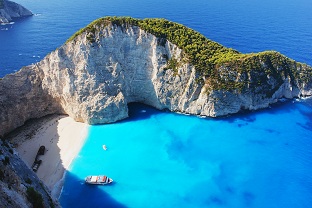Adapting to climate change, Mediterranean style

Related topics
Environment & climate action Innovation Belgium Croatia Cyprus France Germany Greece Italy Spain United Kingdom Environment Tunisiadate: 23/09/2014
Project: Climate Local Information in the Mediter...
acronym: CLIM-RUN
See also: CORDIS
Contact: Contact
The Mediterranean area is particularly sensitive and vulnerable to climate change. The Intergovernmental Panel on Climate Change predicts that the region will experience rising sea levels, an increasing number of extreme weather events – including storms and drought – and more frequent wild fires, affecting society, locals and visitors alike.
Local businesses and policymakers need accurate, tailored information to plan for these events so they can adapt to the expected impacts. The EU-funded CLIM-RUN project developed methods to improve the details and the reliability of climate information for the Mediterranean area and to communicate it in an effective way to local users.
CLIM-RUN designed its method to support a future World Meteorological Organisation (WMO) climate services network designed for the entire planet.
The project team followed the guidelines of the Global Framework for Climate Services established by the WMO and adapted climate change models to needs identified by local businesses and policymakers. Users then access the modelling results via CLIM-RUN’s web portal, which relates the models’ results to their specific industries and regions.
Project coordinator Paolo Ruti of Italy’s ENEA (Italian National Agency for New Technologies, Energy and Sustainable Economic Development) says: “This is the first European project on climate services that focuses on consumer needs. It aims to bridge the gap between users and climate services.”
To help users benefit as much as possible from the climate service, the team also developed information sheets explaining how they produced their predictions and how to interpret the CLIM-RUN data.
The information sheets are available in English, French, Italian, Spanish and Greek. English versions are available on the CLIM-RUN website, which will be online until at least 2017, while versions in other languages are available from ENEA, says Ruti. He declares the team will continue to distribute information to users even after the project stops maintaining the website.
User-driven design
CLIM-RUN was unique in that it designed its service around user demands, says Ruti. Using face-to-face meetings, surveys, social networking and workshops, the CLIM-RUN team asked potential users to identify the main types of information that would be most useful to them.
The energy industry – particularly wind and solar energy – tourism and wild-fire prediction services emerged as the areas of strongest demand. Target users told the team they were interested in predictions by season and decade up to 2050, allowing them to plan for natural variations in weather as well as variations due to man-made climate change.
Consulting with businesses and local government, the team then selected case studies for energy, tourism and natural hazards, covering the different types of landscapes in the Mediterranean – mountainous regions, coastal areas and islands.
These case studies helped CLIM-RUN refine its modelling methods and communication style to disseminate relevant information and make it as accessibly as possible. With the final product in place, Ruti explains that the project has anchored the idea that climate information can be useful, especially for the energy sectors and those living in coastal areas.
Next steps
Climate information services already exist in the United Kingdom and Germany. But large parts of Europe, especially Southern Europe, still lack information that they can use to prevent or solve climate-related problems.
CLIM-RUN’s modelling and communication methods, says Ruti, could be the basis for a single climate information service for the whole of Europe and for training new experts in communicating climate knowledge.
Ruti also considers that it could help develop a market in climate information services globally, building on existing WMO services in developing countries. He says, “Europe has a strong interest in climate issues and has the ability to interact with global organisations such as the WMO. Because of the way it is organised, the EU can bring together institutions and create networks.”
